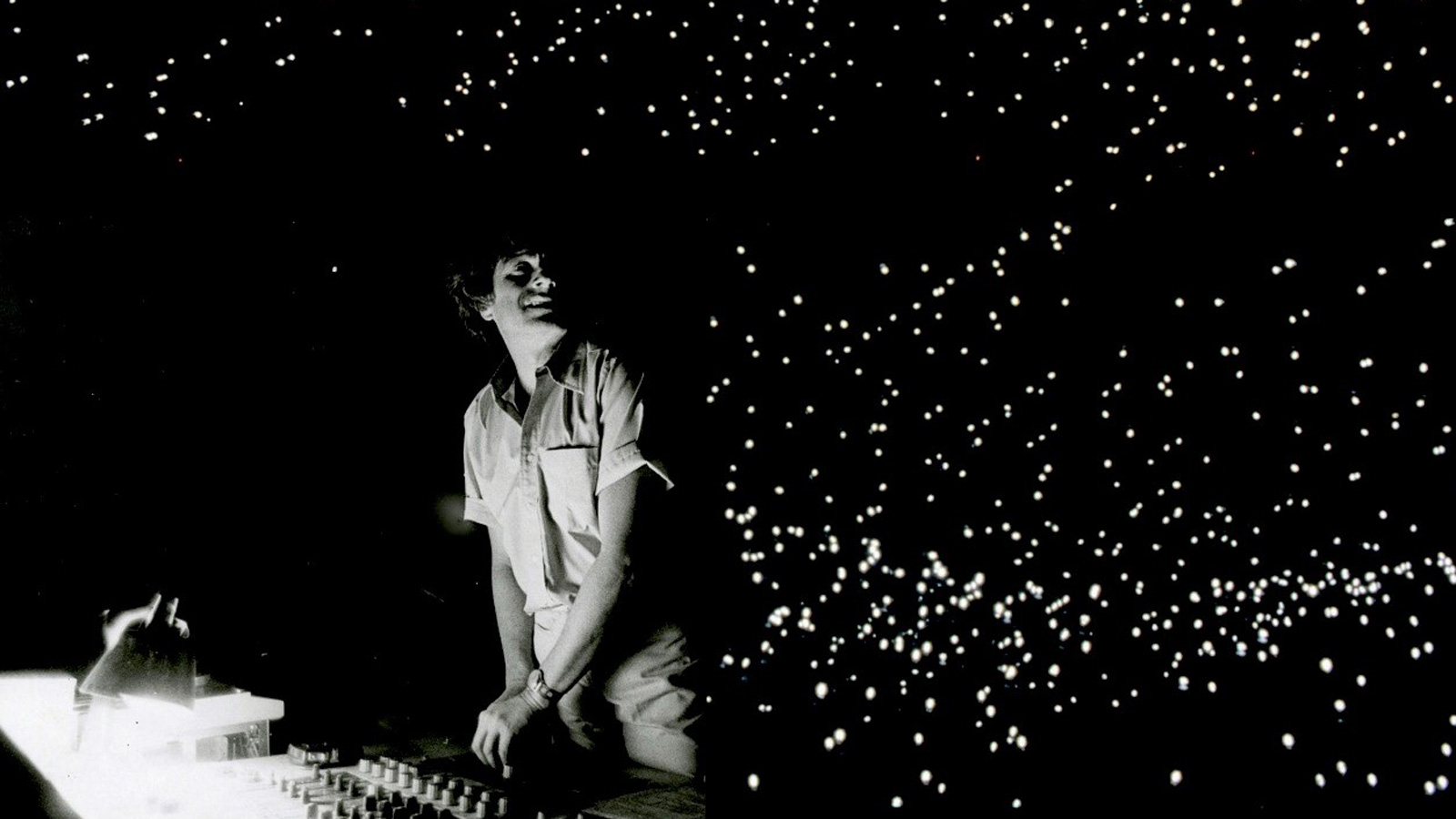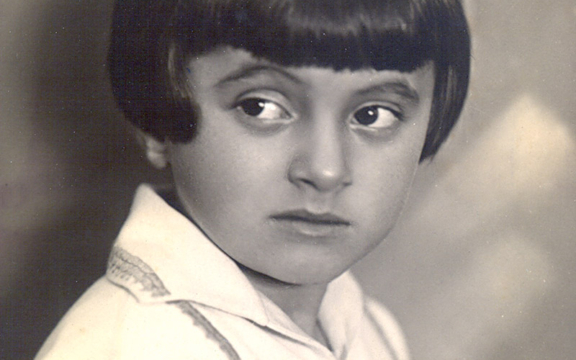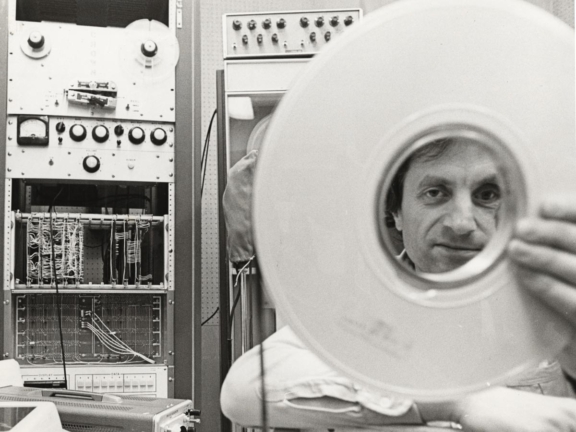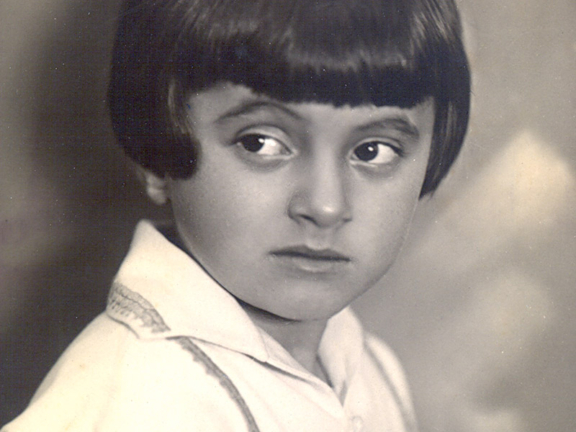
Révolutions Xenakis
Event Slider
Date
- Closed on Tuesday
Location
Temporary Exhibition Gallery Calouste Gulbenkian MuseumPricing
50% – under 30 years and over 65
Free admission – Sunday after 14:00
Révolutions Xenakis, an exhibition co-produced with the Paris Philharmonie, celebrates the many facets of one of the most prolific artists of the second half of the 20th century, Iannis Xenakis. While fascinated with Greek Antiquity (‘born twenty-five centuries too late’ he claimed), Xenakis was also at the cutting edge of the most radical modernism.
As much architect and engineer as he was composer, with a keen interest in mathematics and computer science, he was a pioneer in a variety of fields, including electroacoustic music and computer music. His light and sound shows drew a large following, and the vitality of his catalogue, comprising nearly 150 opuses, never faltered.
By challenging the basic principles of the main music movements of the post-war era, Xenakis invented many of the compositional techniques that characterise the second half of the 20th century. He created a method of composing music using mathematics and a graphic representation of musical notation, and revolutionised the notion of musical sound, with his concept of sound masses giving rise to unheard timbres.
He also introduced the large number processing and notion of probability that are the basis of his theory of stochastic music. He employed the mathematics of games, which led him to the idea of a random musical piece, the content of which is determined only as it is being executed, the result of a ‘duel’ between two orchestral ensembles. Finally, his original approach to space and time in the conception of his shows make him one of the founding fathers of digital art.
A light and sound installation produced by ExperiensS will act at regular time intervals, as a form of short-circuit of the scenographic process invading the ceiling and the walls of the central space of the exhibition – a transposition of Xenakis’ polytopes in 2022.
At the entrance of the exhibition, you can also find a free-entry documentary exhibition that reveals the Iannis Xenakis’ close relationship with the Gulbenkian Foundation, the largest commissioner of his works.
Topics

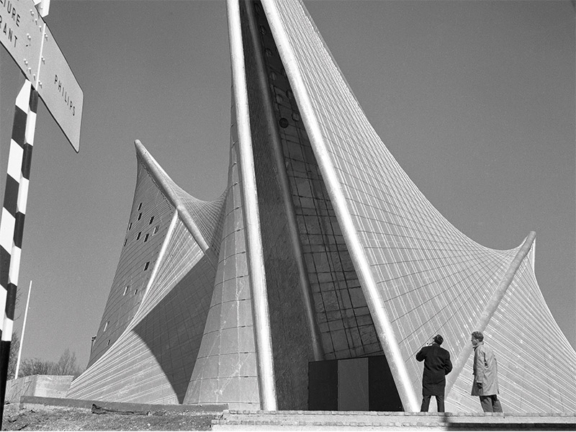
Philips Pavilion
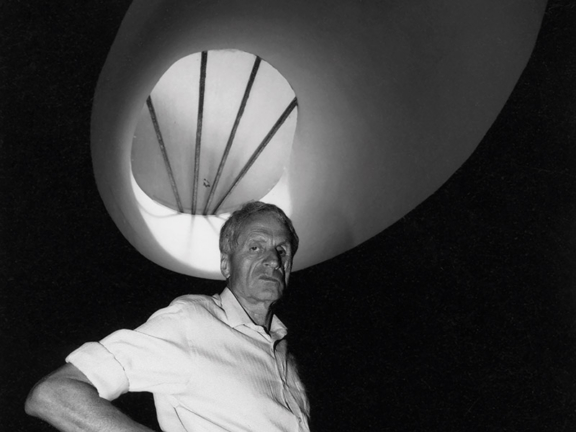
Alloys
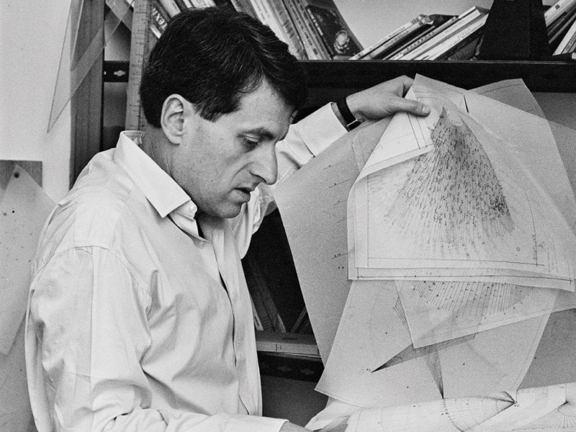
Polytopes
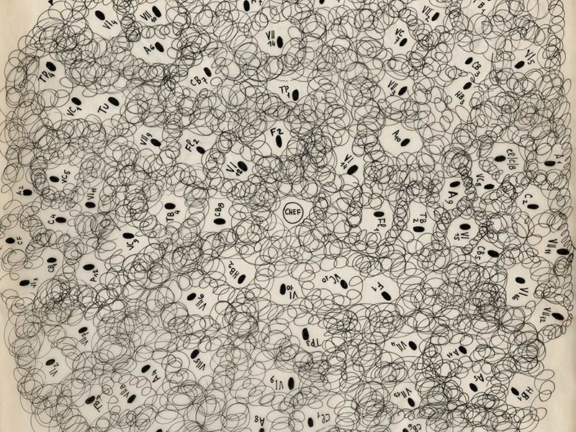
Space-Time
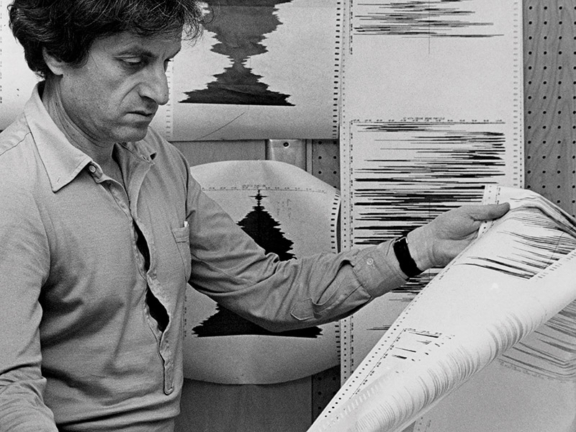
Machine and Design
-
Intimate Pantheon
Iannis Xenakis was born in 1921 or 1922 in Brăila, Romania. His father, Clearchos, ran a British import-export business. His mother, Photini, a music lover, encouraged her son from a young age to take an interest in music. This peaceful existence was disrupted brutally in 1927 when Photini contracted measles and died in childbirth.
Iannis and his brothers were entrusted to governesses until their father sent them off to boarding school on the island of Spetses, where the approach was modelled after major British institutions. A high level of academics and intensive athletics characterised the school, from which Xenakis emerged in 1938 with a clear penchant for the sciences, maths, philosophy and music.
World War II broke out while Iannis Xenakis was at university in Athens. Having joined the Resistance, he was seriously injured by a British mortar explosion in January 1945. Forced into exile, Xenakis all his life held in vivid memory the formative events of his youth, which were also foundational elements in his work.
-
Philips Pavilion
One of Xenakis’s most striking creations during the 12 years he spent at Le Corbusier’s studio is certainly the pavilion built for the 1958 Brussels World’s Fair. Commissioned by the Philips corporation to showcase its light and sound expertise, Le Corbusier came up with a programme of architecture, music and film entitled Poème Électronique.
Handling the show of light and images himself, Le Corbusier tasked Xenakis with the architectural design of the building, and Edgard Varèse with creating the soundtrack. Xenakis also contributed to the project as a composer, and his spatialized piece Concret PH (1958) served as the interlude between showings of Poème Électronique.
The Philips Pavilion, featuring Xenakis’s ‘sound routes’ made up of 325 loudspeakers, was a major attraction at the fair, drawing some 1.5 million visitors with 3,103 showings of Poème Électronique.
-
Alloys
Engineer, architect, composer, mathematician, computer scientist: Xenakis was not one and then the other, nor one without the other. Advocating for ‘alloys’, as he called them, of arts and sciences, his musical and architectural work is the reflection of these different fields, characterised by complementary dynamics. Mathematics is an essential contribution, underlying most of the projects Xenakis developed.
Although there is no example of an architectural principle he translated into a compositional concept, the rhythm of the facade of undulating glass panels at Sainte-Marie de La Tourette convent can be compared with the musical matrices of Achorripsis (1956-1957) and Pithoprakta (1955-1956), just as the hyperbolic paraboloids of the Philips Pavilion echo the glissandi in Metastasis (1953).
These same principles governed the Ville Cosmique project that Xenakis worked on in 1963 for a utopian city of the future that would reach a height of 5,000 metres – embodying a modernness that resonates with the ecological concerns of today.
-
Polytopes
Xenakis’s polytopes – light and sound installations – are works of artistic maturity, representing a synthesis of his interests and ideas. Starting with the Polytope de Montréal created for the French pavilion at the 1967 World’s Fair, these multimedia projects, designed to exploit the plurality of a place (polytope), became increasingly ambitious.
The Polytope de Cluny (1972–1974), an installation at the Thermes de Cluny in Paris, drew some 100,000 spectators, and the Diatope de Beaubourg (1978), a freestanding architectural structure designed for the inauguration of the Centre Pompidou, featured La Légende d’Eer (1977), Xenakis’s most majestic electroacoustic work.
Other projects never came to fruition, such as the Polytope du Mexique, which was highly developed in the design phase and to be based on the network of pyramids in Teotihuacan, or the grandiose Polytope Mondial, a fantasized ‘intercontinental network of light and sound actions’ that was to ‘cast artistic bridges over the oceans’.
-
Space-Time
From his earliest works, Xenakis showed an extraordinary mastery of space and time. The categorisation ‘in time’/’outside of time’ comes from Xenakis’s conception of musical time as a succession of independent sound events or temporal segments.
He was, moreover, one of the first composers to focus attention on the spatialised dissemination of sound. His interest in this area, already in effect with the ‘sound routes’ of the Philips Pavilion, was central in the conception of the polytopes.
A number of his works radically examine the spatialization of sound. In Eonta (1963), for example, the composer asked the five instrumentalists to be mobile while playing. He sometimes employed even more striking devices, such as placing the listener within the orchestra, as in Terretektorh, which premiered in 1966 at the Festival International d’Art Contemporain de Royan, or using a complex system of loudspeakers, as in Hibiki Hana Ma, composed in 1970 for the Osaka World’s Fair.
-
Machine and Design
As both an engineer and architect, Xenakis made ample use of graphic practices, which played an essential role in his creative process. His interest in this type of method may even have preceded his professional training; we know for example that as a young apprentice musician, he tried to graphically transcribe the music of Bach.
Moreover, studying his many notebooks has revealed hosts of new ideas and outlined projects that he formalized through sketches or drawings. The famous graphic curves of Metastasis (1953) and Pithoprakta (1955–1956), the tree structures of Erikhthon (1974) and Khoaï (1976), seeming to echo the branches that Xenakis photographed, became visual signatures of Xenakis’s music.
Yet, while music could spring from a drawing, as it did on the UPIC machine designed in 1976, this underlying function of a graphic score or architectural drawing would sometimes fall away, leaving instead visual artwork and pure design.
Videos
Credits
Curators
Mâkhi Xenakis
Thierry Maniguet
Projects
Wilmotte & Associés Architectes – Exhibition project
Bernard Legacé – Graphic project
Lysandre Le Cléac’h – Graphic project
ExperiensS – Light project installation

